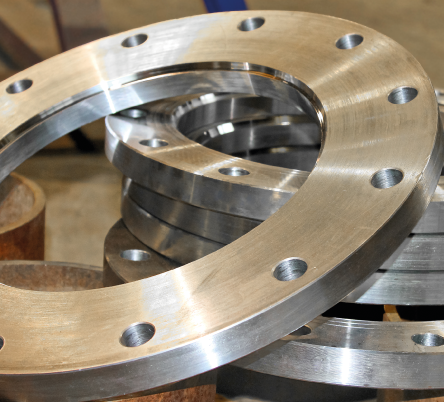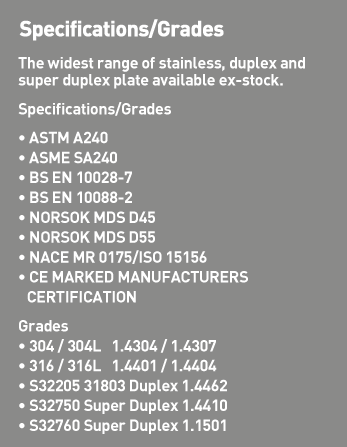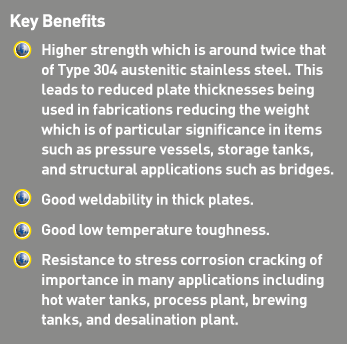


Duplex stainless steel was developed as a product which improved upon the technical strengths of the standard austenitic and ferritic steels by increasing strength, improving low temperature toughness, and resistance to stress corrosion cracking.
Duplex stainless has a microstructure which is split roughly 50:50 between austenite and ferrite and balancing of these phases provides benefits (see key benefits panel)
Duplex stainless steels are still being developed and improved by steel makers. Our close ties with major manufacturers gives us preferential access to these products as they reach the market.
Duplex stainless is also synonymous with enhanced corrosion resistance. There is no single measure of corrosion resistance but the Pitting Resistance Equivalent Number (PREN) is widely used as a means of comparing the relative corrosion resistance of different steel grades.
The PREN is obtained by applying a mathematical formula to the chemical composition of a steel so that PREN = %Cr + (3.3 x %Mo) + (16 x %N). Using this formula 31803 Duplex stainless has a PREN of 32 which when compared with the PREN of Type 304 and Type 316 (18 and 24 respectively) demonstrates its superior corrosion resistance.
In short, due to its higher strength, longer component life cycle, and lower alloy composition, Duplex stainless can be a very cost effective solution to an engineering problem.